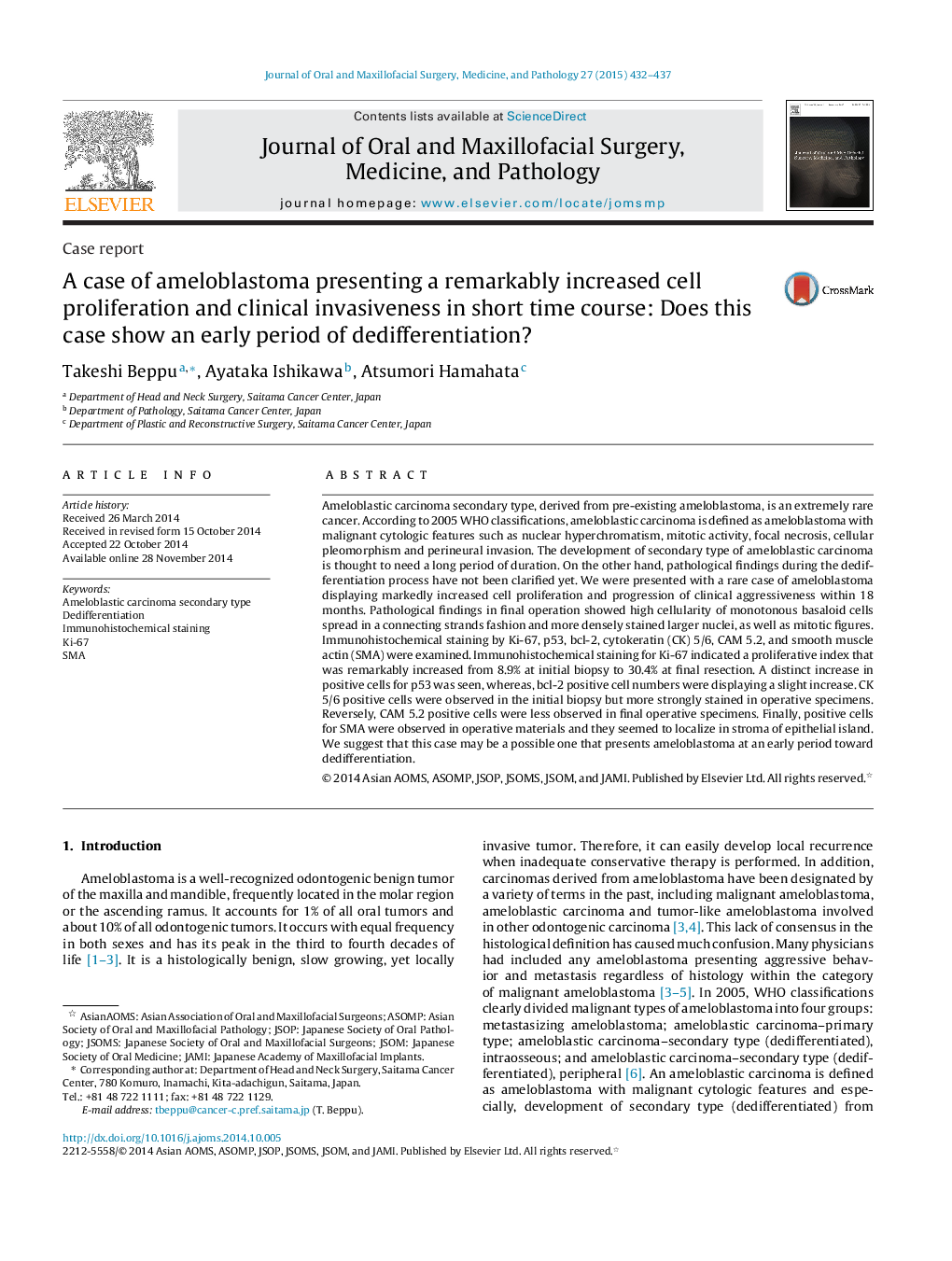| Article ID | Journal | Published Year | Pages | File Type |
|---|---|---|---|---|
| 3160498 | Journal of Oral and Maxillofacial Surgery, Medicine, and Pathology | 2015 | 6 Pages |
Ameloblastic carcinoma secondary type, derived from pre-existing ameloblastoma, is an extremely rare cancer. According to 2005 WHO classifications, ameloblastic carcinoma is defined as ameloblastoma with malignant cytologic features such as nuclear hyperchromatism, mitotic activity, focal necrosis, cellular pleomorphism and perineural invasion. The development of secondary type of ameloblastic carcinoma is thought to need a long period of duration. On the other hand, pathological findings during the dedifferentiation process have not been clarified yet. We were presented with a rare case of ameloblastoma displaying markedly increased cell proliferation and progression of clinical aggressiveness within 18 months. Pathological findings in final operation showed high cellularity of monotonous basaloid cells spread in a connecting strands fashion and more densely stained larger nuclei, as well as mitotic figures. Immunohistochemical staining by Ki-67, p53, bcl-2, cytokeratin (CK) 5/6, CAM 5.2, and smooth muscle actin (SMA) were examined. Immunohistochemical staining for Ki-67 indicated a proliferative index that was remarkably increased from 8.9% at initial biopsy to 30.4% at final resection. A distinct increase in positive cells for p53 was seen, whereas, bcl-2 positive cell numbers were displaying a slight increase. CK 5/6 positive cells were observed in the initial biopsy but more strongly stained in operative specimens. Reversely, CAM 5.2 positive cells were less observed in final operative specimens. Finally, positive cells for SMA were observed in operative materials and they seemed to localize in stroma of epithelial island. We suggest that this case may be a possible one that presents ameloblastoma at an early period toward dedifferentiation.
